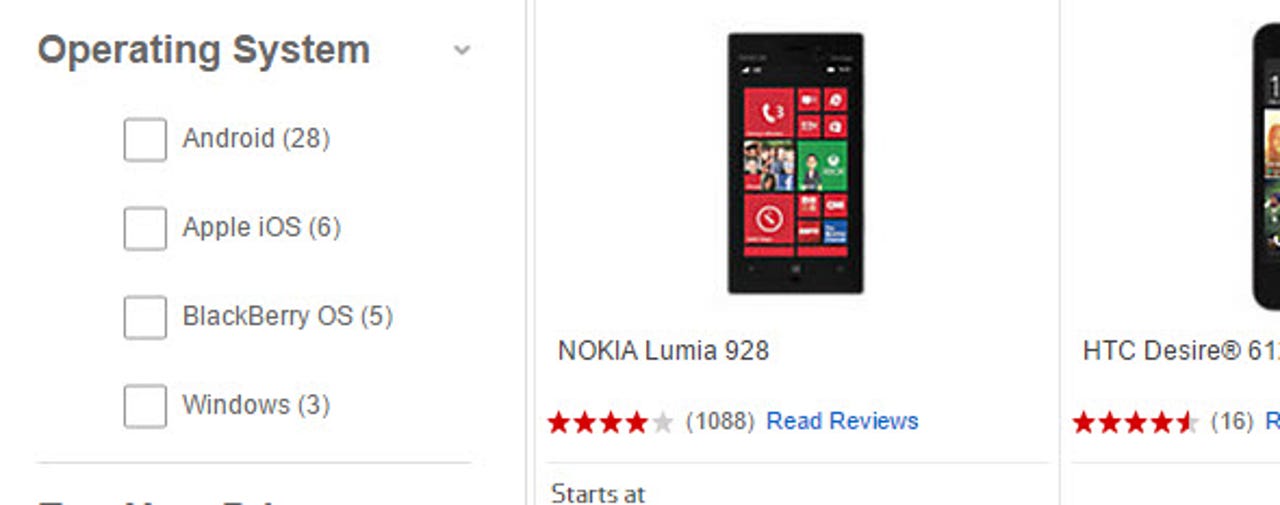Why have I given up on Windows Phone? Blame Verizon

Last month my colleague Matt Miller wrote an impassioned column excoriating Microsoft for focusing on low-end devices for the international market and not building more flagship phones for American carriers.

Matt says he's "extremely disappointed that Microsoft continues to ignore the high-end smartphone buyer with a focus on the affordable phone market." He argues that focusing on price is a losing strategy and that targeting "smartphone enthusiasts" who buy top-of-the-line phones is key to growth in the U.S. market.
I only wish he were right.
If the problems with Windows Phone as a platform were as simple as Microsoft getting their product strategy together, it would probably be easy to fix. But that focus ignores the real problem.
This isn't an equal partnership between Microsoft and U.S. mobile carriers, except perhaps in the most technical sense.
Thanks to Microsoft's minuscule market share (small single-digit percentages in the U.S.), the carriers have almost no interest in collaborating with it on mobile devices. And Microsoft has almost no leverage when negotiating with carriers. The resulting not-so-virtuous circle is what stacks the deck against the Windows Phone platform and makes the experience so frustrating for the few who actually use it.
Featured
Windows Phone has had some success overseas, but with its low-single-digit market share and weak app story, carriers on these shores can safely ignore the platform. It's hard to blame them, given business realities.
In the U.S., there are four major U.S. carriers. One is clearly dominant. Verizon, in its most recent quarterly report, announced that it had passed 100 million postpaid retail subscribers. To put that number into perspective, it represents well over 40 percent of the total U.S mobile market and is roughly equal to the total postpaid subscriber count of AT&T Wireless and T-Mobile combined.
And yet Verizon's attitude to Windows Phone could charitably be described as callous.
Consider: Verizon began selling the Lumia Icon (aka Lumia 929) in February 2014. It's a genuine flagship phone, with a fast processor, ample storage, and a 5-inch, high-definition (1080x1920) display. It has the best smartphone camera I've ever used.
Microsoft considers it a flagship device. Back in July 2014, the company released its Lumia Cyan update, a major overhaul that includes significant new features as well as the Windows Phone 8.1 Update.
In the official announcement of that release, Microsoft proudly listed features that would be coming to the Lumia Icon "in the coming weeks."
That was five months ago. And yet, if you are a Verizon customer who owns a Lumia Icon today, you are probably still running the Windows Phone 8.0 release. You don't have any of the camera improvements that came with that update. You don't have Cortana, the extremely capable Windows Phone personal assistant. You don't have Wi-Fi Sense or notifications in the Action Center.
And to add insult to injury, Verizon stopped selling that flagship Windows Phone in October. Meanwhile, it continues selling the 18-month-old midrange Lumia 928.
Latest review
The bad news is that carriers control the firmware updates for devices. And without the matching firmware, some of those OS updates don't work properly. Many of the new camera features, for example, depend on firmware, as do connections to devices like the Fitbit.
Microsoft has built a website that lists the update status of every mobile device it sells. AT&T and T-Mobile have shipped out the Cyan firmware and Windows 8.1 Update to every device capable of receiving it (the 2012-vintage Lumia 810 is the only one that didn't make the cut).
But Verizon is still refusing to release that firmware, as the status chart makes clear.
Meanwhile, Microsoft is continuing to push out new features for Lumia phones with its Denim update, the successor to Cyan. Denim is already shipping in AT&T's Lumia 830. But Verizon owners are still waiting for the previous firmware release.
Back in October, Microsoft's Joe Belfiore tried to mollify Verizon customers with this tweet.
MS/Verizon are working on some bug fixes-- VZW taking the quality seriously. We aren't sure how long it will take, but work is underway.
-- joebelfiore (@joebelfiore) October 30, 2014
Asked for comment six weeks later, Belfiore says only: "Still working on it... no new info to provide."
I'd love to leave Verizon behind completely and switch to another carrier, but I don't have that luxury: Where I live and work, Verizon is the only carrier with a reliable signal.
After waiting in vain for months, I've finally given up. I used the Nokia Software Recovery Tool to restore the factory software to my Lumia Icon and put it on the shelf until Microsoft and Verizon figure things out. In the meantime, I've switched to an iPhone 6 Plus.
I'm probably not the only one.
And as long as U.S.-based carriers, including the biggest of them all, Verizon, are able to drag their feet and ignore Windows as a mobile platform, it's unlikely that anything Microsoft can do will be able to make a dent in its market share in the United States.